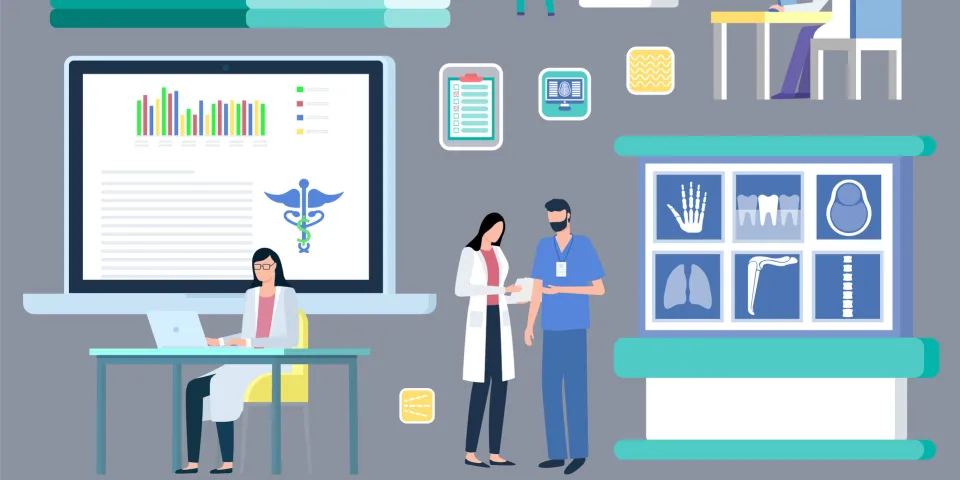Latest 
 Career Development Denise Alexander
Career Development Denise Alexander
Recent Blog Posts


X-rays are one of the most valuable tools for doctors when assessing and treating patients. It’s estimated that 3.6 billion diagnostic X-ray examinations are performed worldwide each year. Those who feel hesitant to seek radiologic treatment should be aware of the facts behind this technology to ensure they receive the best treatment possible. The use of radiation in medical imaging can save lives and prevent the need for more invasive operations if patients trust the procedure.
We’ve put together some of the most common misconceptions about radiologic technology and valuable information to keep in mind when seeking treatment.
Well-intentioned physicians will never put a patient in danger and the use of X-rays is no exception. While an excessive amount of radiation can be dangerous, X-rays do not produce nearly enough radiation to cause lasting damage.
Every day, we are constantly exposed to small amounts of ionizing radiation from natural sources. Naturally-occurring background radiation is the main source of exposure for most people. A single chest X-ray exposes the patient to about 0.1 mSv. This is about the same amount of radiation people are exposed to naturally over the course of about 10 days. The risk of radiation exposure is so low for some X-ray patients, the Physicists’ Association, Radiologists, the American College of Radiology (ACR) and the Image Gently Alliance (which promotes safe pediatric imaging) are recommending the discontinuation of lead aprons to shield the body during X-rays as the entire imagery process continues to advance and be re-assessed to provide the most accurate and helpful diagnostic information. The National Council on Radiation Protection (NCRP) and FDA are reviewing Radiation Protection practices.
X-Rays have been used in medicine for over 100 years. Since the invention, there have been plenty of adjustments and developments to the technology used and the precautions taken. Originally, X-rays used glass photographic plates, which were eventually replaced with photographic film. Now, X-rays can be performed digitally, utilizing advanced and emerging technologies to significantly decrease the amount of radiation used while simultaneously increasing the quality of the images.
While the methods of performing X-rays have evolved, the role that radiologic technology serves in the process of providing medical care remains as important as ever.
While doctors use X-ray images to make the most effective diagnoses possible, they are not as involved in the image acquisition process as one might think. There is an entire team of radiologic technologists who ensure the X-ray process goes smoothly from beginning to end. There are plenty of misconceptions surrounding the role of radiologic technologists. These medical imaging experts are an integral part of ensuring that a patient's diagnostic X-rays are taken properly. They also provide support to doctors by preparing patients for exams, explaining exam procedures to patients, correctly positioning patients so that the anatomy of interest can be radiographed and critically assessing each image before sending it to the Radiologist to read.
Radiologic Technologists were ranked #21 by US News and World Report in their 2022 review of top health care support careers, making it the perfect choice for those who are interested in technology, data collection and helping others. After completing an A.S. program in Radiology, passing the ARRT Registry and becoming a Radiologic Technologist R.T. (R ), options such as MR, CT, Dexa, Interventional Radiography and Mammography are post-primary credentials in the field that are available with some education and on the job training. See ARRT.org for more information on the requirements.
Herzing University offers a radiologic technologist degree program in Orlando and Tampa, Florida, where students not only learn theory and principles of radiation production but learn radiographic techniques and the fundamentals of patient care as well. If this is a career path that interests you, don’t fear the misconceptions. Contact our admissions team today and enroll in this rewarding program.
BLS pay estimates calculate the median annual wage for various occupations. Per the BLS the median wage for an occupation is: "The wage at which half of the workers in the occupation earned more than that amount, and half earned less. Median wage data are from the BLS Occupational Employment and Wage Statistics survey." Bureau of Labor Statistics (BLS), U.S. Department of Labor, Occupational Outlook Handbook 2024. BLS median wage estimates do not represent entry-level wages and/or salaries. Multiple factors, including prior experience, age, geographic market in which you want to work, and degree level and field, will affect career outcomes, including starting salary and earnings as an experienced employee. Herzing neither represents that its graduates will earn the median salaries calculated by BLS for a particular job nor guarantees that graduation from its program will result in a job, promotion, particular wage or salary, or other career growth.
Get the latest news you need to know, from study hacks to interview tips to career advancement. Have it delivered right to your inbox biweekly.